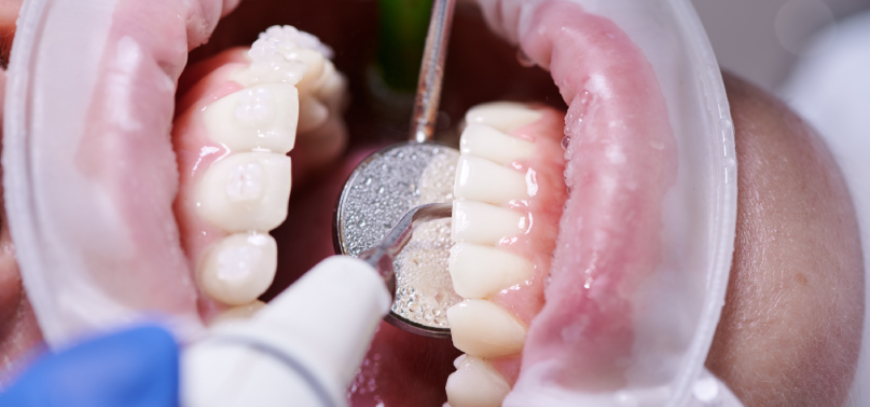Working Time
- Mon-Fri: 9:00 AM – 5:00 PM
Saturday: Closed
Saturday: Closed
Contact Info
-
Phone: 1-888-204-5010
Ask the Experts
Periodontics

What is Periodontics?
Periodontics is a specialized field of dentistry that focuses on the study, diagnosis, prevention, and treatment of diseases and conditions affecting the supporting structures of the teeth, known as the periodontium. The periodontium includes the gums (gingiva), cementum (the outer layer of tooth roots), periodontal ligaments (the connective tissue that holds teeth to bone), and alveolar bone (the bone that supports the teeth).
Periodontists are dental specialists with advanced training in managing periodontal diseases, such as gingivitis and periodontitis. They perform various procedures, including scaling and root planing, periodontal surgery, gum grafting, and dental implant placement. They work to maintain and restore gum health, prevent tooth loss, and improve overall oral health.
What Is the Procedure of Periodontics?
Periodontics encompasses a range of procedures aimed at diagnosing, treating, and managing conditions related to the periodontium—the supporting structures of the teeth, including the gums, periodontal ligaments, cementum, and alveolar bone. Here’s an overview of standard periodontal procedures:
- Scaling and Root Planing: This non-surgical procedure often used to treat early stages of periodontal disease. It involves removing plaque and tartar from below the gumline and smoothing the tooth roots to encourage gum reattachment and prevent further plaque buildup.
- Gingival Flap Surgery: In cases of more advanced periodontitis, this surgical procedure involves making small incisions in the gums to lift them away from the teeth, providing access for deep cleaning of the root surfaces and removing infected tissue. Afterward, the gums are sutured back in place.
- Gingivectomy: This procedure involves removing a portion of the gum tissue. It’s used to treat gum disease or to reshape gums for aesthetic reasons, such as correcting a “gummy smile.”
- Abutment Placement: After the implant has bonded with the jawbone, a small connector post called an abutment is placed on top of the dental implant to hold the new tooth securely.
- Gum Grafting: In cases of gum recession, periodontists can perform gum grafting to cover exposed tooth roots. This involves taking tissue from another part of the mouth, typically the palate, and attaching it to the area with gum recession.
- Crown Lengthening: This procedure is often used to expose more of a tooth’s surface, either for restorative reasons (such as placing a crown) or for aesthetic purposes. It involves reshaping the gums and sometimes the underlying bone.
- Bone Grafting: If periodontal disease has caused bone loss, bone grafting can help rebuild the supporting bone. This procedure uses bone material from the patient, a donor, or synthetic sources to encourage bone regeneration.
- Dental Implants: Periodontists are often involved in placing dental implants, which are artificial tooth roots inserted into the jawbone to support crowns or bridges.
Each of these procedures serves a specific purpose, from treating periodontal disease to restoring gum and bone health or enhancing the aesthetics of a patient’s smile. The specific procedure used depends on the patient’s condition, severity of the disease, and desired outcomes.
Answer: Periodontal disease, also known as gum disease, can manifest with various signs and symptoms. Early signs include red, swollen, or tender gums and bleeding during brushing or flossing. As the disease progresses, you might experience receding gums, persistent bad breath, loose or shifting teeth, and changes in your bite. In severe cases, pockets can form between the teeth and gums, leading to tooth loss if left untreated.
Answer: Preventing periodontal disease involves maintaining good oral hygiene and having regular dental check-ups. Brush your teeth at least twice a day with fluoride toothpaste, floss daily, and consider using an antimicrobial mouthwash. Regular dental cleanings and check-ups with your dentist or periodontist can help catch early signs of gum disease. A balanced diet and avoiding smoking or excessive alcohol consumption can also reduce your risk.
Answer: Recovery time for periodontal surgery varies depending on the procedure and individual factors like age and overall health. Generally, patients can expect some discomfort and swelling for a few days after surgery. Sutures are typically removed within 7 to 14 days. Most people can return to normal activities within a day or two, but strenuous activities should be avoided for a week or more. Full healing can take several weeks, and follow-up appointments are essential to monitor healing and progress.